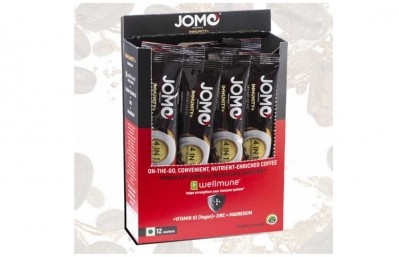Idea to commercialisation: How PepsiCo, Yili and start-ups are innovating across product formats for probiotics growth

The Probiota Asia 2021 Digital Summit was a four-day virtual event held by NutraIngredients-Asia, and in its final session discussing ‘Idea to Commercialisation: Product Development, Innovation and Format Opportunities’, event speakers and panellists highlighted the importance of various factors from scientific evidence to regulatory challenges when it comes to commercialising probiotic and prebiotic products in the APAC region.
The event’s keynote speaker was Dr. Pietro Antonio Tataranni, CMO and SVP Life Sciences at PepsiCo, and other speakers included Morinaga Milk Industry Sales Development Manager Yosuke Muto, IFF Application and Tech Support Lead APAC Dr Anders Henriksson, Nanyang Technological University food science programme director Professor William Chen, National University of Singapore food science programme’s Associate Professor Liu shao Quan, FunDay Founder Daniel Kitay and ffit 8 Founder Zhang Guangming.
Chinese dairy giant Yili’s Assistant President Dr Yun Zhanyou, Prof Liu’s PhD student Alcine Chan, and Deerland Probiotics VP of Marketing Susanne Baekgaard attended the panel in addition to Prof Chen and Kitay. The session was hosted by NutraIngredients-Asia Editor-in-Chief Gary Scattergood.
In this final session discussing probiotic product commercialisation, it was highlighted that strong scientific evidence and efficacy is needed to back up any health claims made by companies when launching products to market.
“The selection of probiotic strains to incorporate into products still needs to be validated by scientific evidence, and this is very crucial to any product design we undertake,” Dr Tataranni said in his keynote presentation.
“[This is to ensure the various factors] such as ingredients, flavour profiles, learning what works best for cell viability, how the processing can be made more favourable for the probiotics strain, and most importantly, stability testing to ensure the probiotics count at the end of the shelf remains appropriate.
“COVID-19 has caused many consumers to seek out functional products such as probiotics to help them take control of their health and accelerated the trend and belief that ‘good nutrition equals good outcomes’ many times over, [so there are] many growth opportunities in the broader gut wellness and especially the probiotics space [as long as] all players are disciplined about their claims and back these with solid science].”
Baekgaard concurred, reminding the floor that consumers will be able to tell if a product makes a claim but the health benefit does not shine through.
“Solid scientific evidence of health benefits is really the only way to make sure that the products being sold have the effects they claim, and that consumers will be able to feel the difference,” she said.
“Consumers are paying an amount of money that is really not insignificant to buy these products, so they need the evidence as well as to be able to feel the efficacy and benefits of these in order to ever make a repeat purchase – otherwise the product would never see any return customers.
“There is however a distinct difference between supplements and drugs and the scientific evidence needed for both of these – this is something that needs to be communicated well by all companies and the message must be clear in order to be sustainable.
“As for complicating factors in terms of obtaining ‘enough’ evidence, this is most likely because many companies are working on many different ingredients within this space so the evidence is currently spread a bit thin and it is challenging in that sense – but it is still important to dig deeper into the science and do the necessary experiments and confirming trials to help boost the product.”
Delivery formats - functional foods and drinks
Probiotics today are no longer limited to being sold as capsules or powder supplements, but are increasingly being incorporated into everyday foods and beverages – a trend which Prof Chen highlighted as very important for the sector.
“The incorporation of probiotics into foods and beverages is very much in line with consumers’ changing lifestyles today, where the urban consumer wants things fast-paced and convenient, including their probiotics consumption,” he said.
“This is why existing foods with health-boosting elements, such as probiotics, are very much welcomed by consumers, and it is very important to consider the element of convenience for them [to ensure commercial success].”
For instance, Prof Chen’s team developed probiotic ice cubes containing 25g Bifidobacterium lactis which can be used just like regular ice cubes, but with an added probiotics boost.
“The basis for this innovation was versatility – instead of looking to supplements or specific fermented beverages to improve gut health, this probiotic ice is a neutral platform where consumers can enhance their guy health with any beverage of choice, from juice to alcohol, just by adding these ice cubes,” he said.
The ice cubes have already achieved successful commercialisation in Singapore, being sold in NTUC Fairprice supermarkets nationwide.
Yili’s Dr Yun maintained that in China, at present the most effective formats of bringing probiotics to the masses is still via beverages, although he concurred that as the industry evolves future applications and formats are still likely to emerge.
“In terms of being easy and convenient to carry around during travel though, we are still finding that probiotics in tablet and powder format are the most popular,” he added.
As for Prof Liu and Chan, their lab is working on developing probiotic coffee and tea, using heat-resistant probiotic yeast.
“There is this huge trend to functionalise beverages today, and we are looking to do this with coffee and tea by adding probiotics into these,” said Prof Liu.
“We use Bacillus spores which are resistant to harsh environments, so these have a stable shelf-life and are ideal to be used even in hot coffees and teas.”
Chan added that the number one concern when it comes to developing probiotic beverages is viability, so the importance of food science research is seen here in terms of finding ways to get around the technical challenges.
“That said, although the scientific knowledge about food science we have is advanced today, it should be borne in mind that a lot of evidence we have on probiotics comes from supplements studies – when applied to functional foods and beverages, we do not yet know for sure how the consumption of these might change cellular expressions or morphologies, or whether the health benefits are different,” she said.
Added functionalities
Although probiotics are already a functional product, today’s consumers are now looking beyond products that contain probiotics alone, but want multi-functionalities with each purchase they make.
“We are seeing some mega trends surrounding combos of multiple-strain probiotics with vitamins as well as herbals or botanicals to increase product functionalities,” Henrikssen said.
“Some commonly added items include vitamins C and D, minerals like zinc and calcium, and herbals/botanicals such as echinacea and ginkgo. These ‘combo’ products have seen some 60% increase in sales via e-commerce in the past two years since early 2019.
“These actives can cover multiple health areas from brain health to weight reduction to cardiovascular health, urogenital health and more. For instance a product targeting relaxation can include the probiotic strain Lacticaseibacillus paracasei Lpc-37 which is scientifically proven to reduce stress in addition to Phosphatidyl Serine (PS) which is beneficial for memory and cognition.”
For Funday, which specialises in making healthier candies and has a line of sweets with prebiotics, the multifunctionality for the firm is in terms of having to also be both plant-based and reduced sugar in line with current confectionery trends.
“For all foods, including functional foods, the aim is for the food to still taste as good as the regular thing – so for us it was about removing 91% of the sugar in our lollies and still making these delicious,” said Kitay.
“Then came the addition of prebiotic fibres, which meant altered cook times, temperatures and all that, and then came the plant-based foods drive which meant having to replace gelatine with pectins. But these were all necessary to meet current consumer demands in line with current trends, and to ensure that we get their repeat business.”
Zhang, whose company ffit8 produces probiotic protein bars and protein powders, added that protein-based foods are also seeing rising demand in markets such as China, and added functionalities such as probiotics can only increase the attractiveness of these.
“Chinese consumers are in pursuit of a higher quality of life [and] products that can give them this, so there is vast market space for the ‘foodisation’ of probiotics here,” he said.
Market growing rapidly
All in all, the speakers and panellists agreed that the market for probiotics products is growing rapidly and has enormous potential especially in the post-pandemic period.
“There is a growing market size for probiotics as consumer health awareness is on the rise due to COVID-19,” said Muto.
“Many companies are looking at new product development or reformulation using functional ingredients such as probiotics, and this covers a wide variety of products from yoghurt, yoghurt drinks, and fortified milk to chocolates and more [so the opportunities are immense].”
The probiotics markets in China, Japan and South Korea were also highlighted to be amongst the most exciting currently.
“China is driving a lot of interest as there are many potential probiotics users there, and places like Japan and South Korea are also on the forefront as these markets are somewhat more liberal on allowing new products in,” said Baekgaard.
Prof Yun added that there are many more opportunities to be had especially as a lot of products are currently focused on immunity and gut health.
“There was of course a big boom in immunity products last year due to COVID-19, and this is likely to continue to expand as there are still many companies launching new products, but there are many other functionalities to be explored,” he said.
“These include benefits such as improving mineral absorption or metabolic syndrome, which I believe will be popular in the future; as well as personalised and precision nutrition although this area is likely to need a lot more work before it becomes widespread.”









